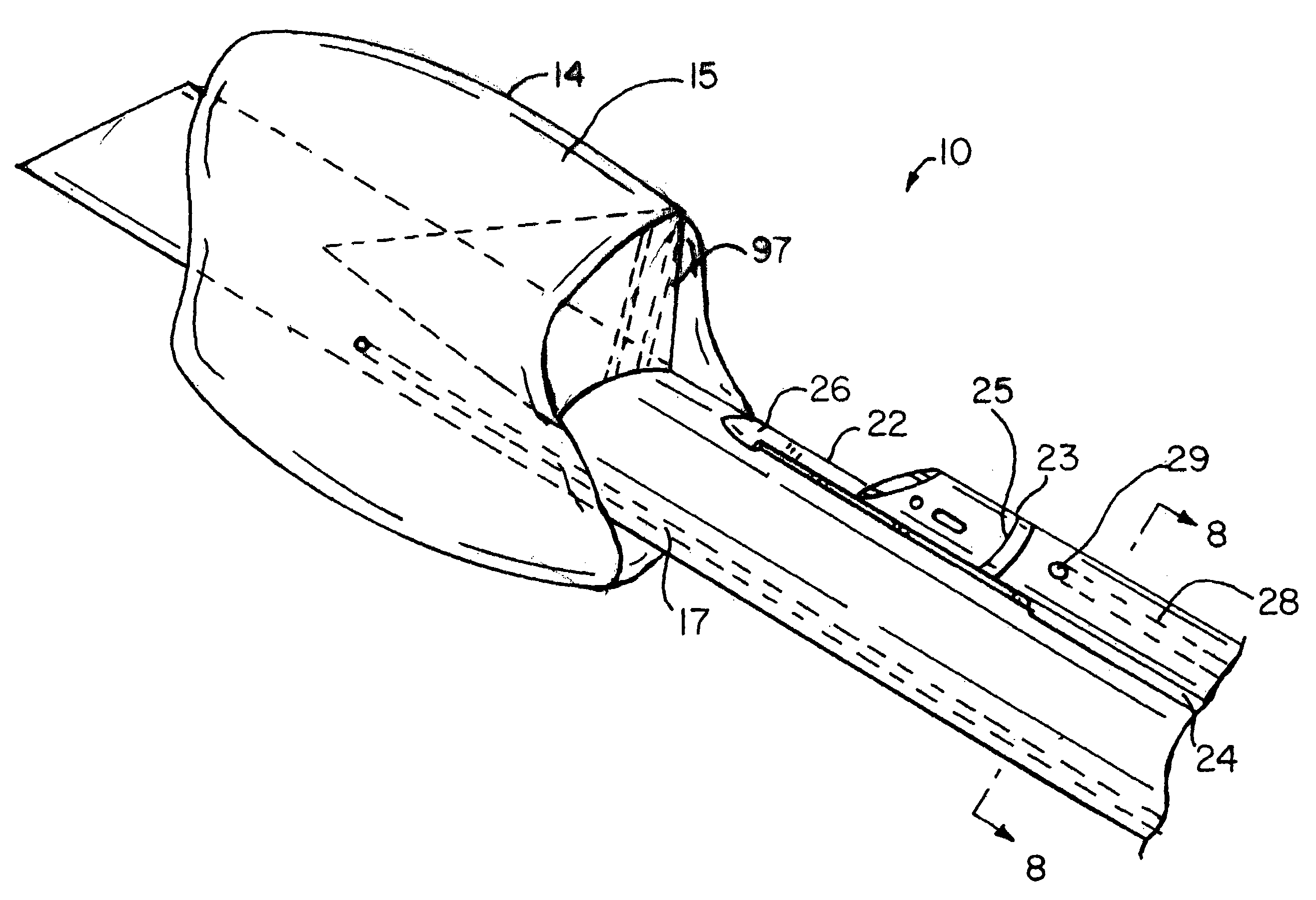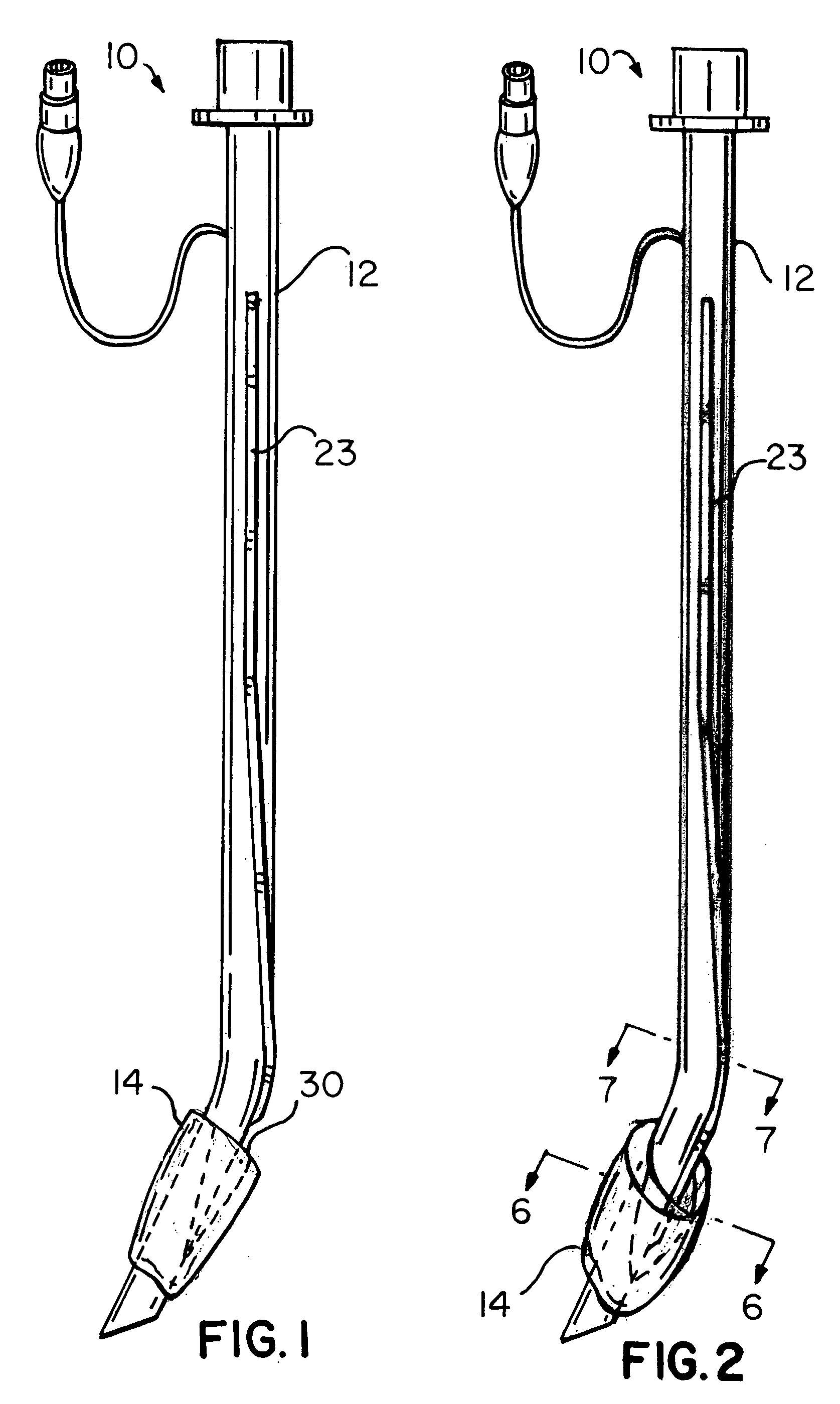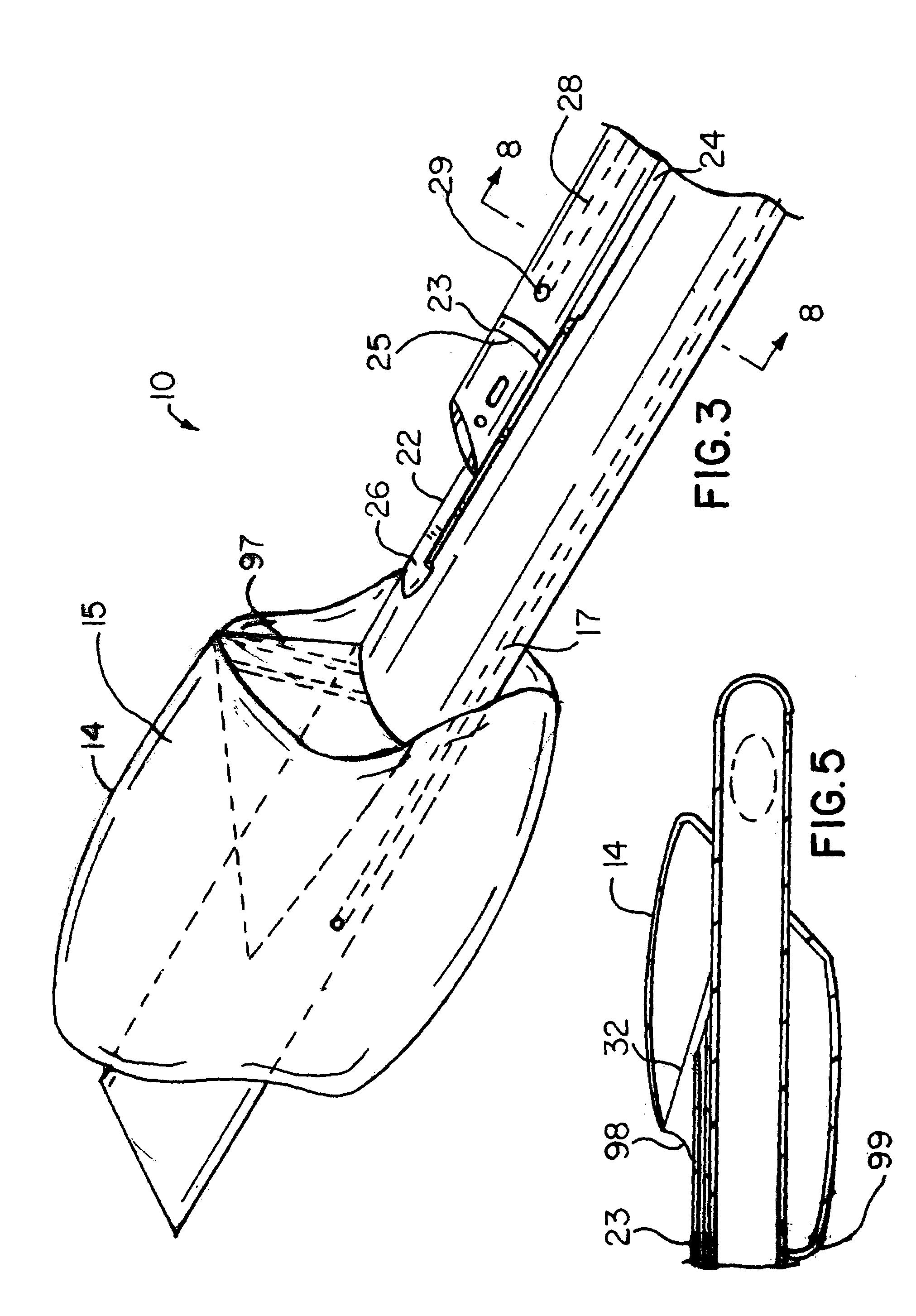Endotrachael tube with suction catheter and system
a technology of endotracheal tubes and suction catheters, which is applied in the field of endotracheal tubes, can solve the problems of inability to routinely and effectively use endotracheal tubes with dorsal lumens, the patient is almost always placed in danger, and the buildup of excessive oropharyngeal and gastroesophageal secretions above the cuff, etc., and achieves the effect of convenient and safe removal
- Summary
- Abstract
- Description
- Claims
- Application Information
AI Technical Summary
Benefits of technology
Problems solved by technology
Method used
Image
Examples
Embodiment Construction
[0053]With reference to the drawings, FIGS. 1–17 depict the preferred and alternative embodiments of the instant invention, which is generally referenced by numeric character 10 and, or as an endotracheal tube and suction catheter system 10.
[0054]With reference to FIGS. 1–5, the endotracheal tube and suction catheter system 10 generally comprises a main lumen 12 having an inflatable balloon cuff 14 with a collection pocket 30 for holding pooled secretions, suction catheter 23 for removing the pooled secretions and rail system 20 for guiding and positioning the suction catheter 23 in the vicinity of the collection pocket 30. The main lumen 12 comprises a conventional endotracheal tube having a central passageway 16, modified balloon cuff 14, inflation lumen 17 and Murphy eyelet 18. The inflatable cuff 14 is secured to the main lumen 12, as is known in the art, and defines the collection pocket 30 as shown in FIGS. 2–5. The balloon cuff 14 is preferably shaped substantially like a par...
PUM
 Login to View More
Login to View More Abstract
Description
Claims
Application Information
 Login to View More
Login to View More - R&D
- Intellectual Property
- Life Sciences
- Materials
- Tech Scout
- Unparalleled Data Quality
- Higher Quality Content
- 60% Fewer Hallucinations
Browse by: Latest US Patents, China's latest patents, Technical Efficacy Thesaurus, Application Domain, Technology Topic, Popular Technical Reports.
© 2025 PatSnap. All rights reserved.Legal|Privacy policy|Modern Slavery Act Transparency Statement|Sitemap|About US| Contact US: help@patsnap.com



